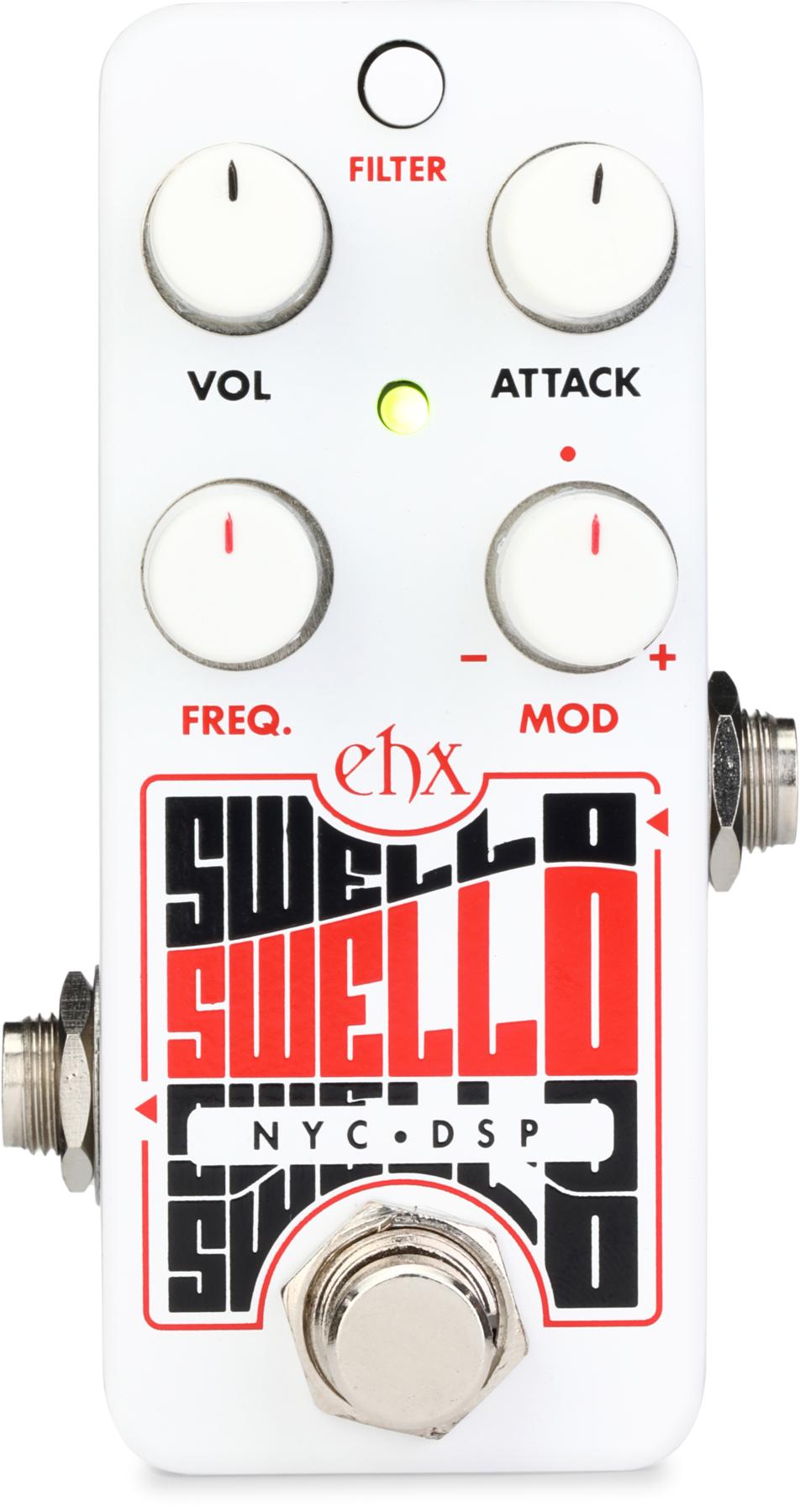Recorded direct with a passive Fender Deluxe P using PreSonus FireStudio and PreSonus Studio One 3
Clip 1 - Blend at noon, sensitivity at 3 o’clock, tone at 3 o’clock, and output at 2 o’clock.
RatingsPros:Compact. The clean control. Wide range of compression tones. Cons: Tightly packed controls. Tone maxed with fast attack engaged can cause clipping. Street: $149 street MXR Dyna Comp Bass jimdunlop.com | Tones: Ease of Use: Build/Design: Value: |
The MXR Dyna Comp has been an almost-iconic staple for many guitarists since its introduction, as in, like, a lot of people use one. So, suppose we could take the same CA3080 circuit, put it in a really small pedal chassis, provide more control options for our tone, and do it all with bassists in mind? Enter the MXR Dyna Comp Bass, a tiny compression pedal with some extra features packed in, built specifically for low enders.
Mini Me
When opening the box for the Dyna Comp Bass, the first thing you might notice is that the power-adapter box is larger than the pedal itself. This mini-format compressor is about as small as one can make a pedal these days, and for a travel rig or someone who doesn’t want much more than a tuner onstage, the Dyna Comp Bass can speak volumes.
It has the familiar output and sensitivity controls from the original Dyna Comp. This mini also houses a clean (wet/dry blend) control, which dials in the uneffected tone to taste for maintaining low-end integrity. There’s also a tone control, which cuts or boosts the midrange 7 dB at 1 kHz, allowing you to add a little sparkle to your tone as well. The topside switch governs the speed of the attack.
Small Yet Ferocious
I ran the Dyna Comp Bass through an Eden WTP900 and matching D212XLT cabinet, and plugged in a Fender Deluxe P bass with passive pickups. I dialed in a couple of great sounds right away, with my favorite-control vote going to the clean knob. When I set it at about 3 o’clock, my P was allowed to breathe and sound expressive, so the vibe of my tone was able to bump through nicely. Conversely, turning the clean knob close to all the way down (counterclockwise) and dialing the sensitivity to taste gave me a wonderfully squashed, indie-rock-style bass tone.
The tone control is a nice tool for midrange sculpting, though diming the knob created a tone a bit too aggressive for my taste, and could also cause my signal to break up. (For some, that could be a desired effect.) Meanwhile, the attack switch functions as a toggle between a vintage- (slow attack) or modern-sounding (fast attack) compression. It’s a great option to have onboard for a quick tweak if needed. I favored the smooth feeling of the vintage setting because of the additional room it gave my bass to breathe. For a more aggressive, modern player, however, a faster, more aggressive attack to help clamp down on the transients is just a click away.
The VerdictThe MXR Dyna Comp Bass is compact, budget-friendly, and will likely make a splash. Whether you are new to the compression game or a seasoned pro, this mini-format pedal offers quite the range of tonal possibilities, and crams in some great tools for its primary purpose: evening out your signal. There’s only so much real estate here, so the controls are a bit tight, but you probably won’t be making a ton of adjustments once you find your set-and-forget sound anyhow. If you really need to make compression changes that often, heck, get two! They’ll fit.









![Rig Rundown: Russian Circles’ Mike Sullivan [2025]](https://www.premierguitar.com/media-library/youtube.jpg?id=62303631&width=1245&height=700&quality=70&coordinates=0%2C0%2C0%2C0)












